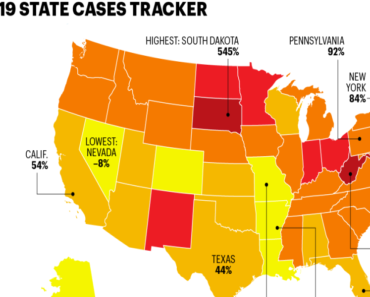This post was originally published on this site
https://fortune.com/img-assets/wp-content/uploads/2024/03/53614606090_d56b276d46_o-e1711934961193.jpg?w=2048
Japan’s central bank raised interest rates above zero for the first time in 17 years just under two weeks ago. It lifted interest rates to 0-0.1%, up from -0.1%, ending the world’s last negative interest rate regime among major economies—and signaling to economists that Japan’s 30-year slump may finally be over.
Tokiko Shimizu, an assistant governor at the Bank of Japan, is one of those who sees the ending of the negative rate regime as symbolic of Japan turning a corner—even if the rate increase is tiny by international banking standards.
“The step itself is very small—10 basis points,” she said Wednesday at the Fortune Innovation Forum in Hong Kong. “But it’s a very great step for the Japanese economy.”
For the central banker, this historic step by the Japanese central bank reflects a new reality in the country, where wages and prices are rising after years of stagnation.
“The reason we decided to change it is because the virtuous cycle between wages and price is going on,” she said, pointing to recent wage negotiations between Japanese companies and labor unions. Discussions led to a 5.28% pay increase, the largest raise in 33 years.
Shimizu noted that her colleagues in other G7 and G20 economies are more worried than Japan’s central bank is about fast wage growth. Companies raise prices to account for higher labor costs, worsening inflation, and, in turn, encouraging workers to ask for more pay increases later. Economists blamed this wage-price spiral for persistent inflation and economic stagnation in Western economies in the 1970s, and worries about this happening again persist in many countries.
Yet Japan has instead faced an altogether different fight—it has battled persistent deflation for decades, causing lower consumption, stagnant wages and falling asset prices. For Shimizu and her colleagues, March’s wage negotiations show that Japan might finally be seeing a more normal pattern of inflation.
On Wednesday, Shimizu forecast that further interest rate increases were unlikely. “We expect the price movement in coming years to be around 2%. That means we don’t see any interest rate hike [to be] necessary.”
Headline inflation accelerated to 2.8% in February. It marked the 23rd consecutive month the figure has met or surpassed the central bank’s 2% price target.
Is Japan back?
Japan’s recent interest rate hike is just part of a larger narrative that the world’s fourth-largest economy is back on track. The country’s stock markets have now surpassed records set all the way back in December 1989, at the peak of Japan’s bubble economy.
Jesper Koll, board director at the Okinawa Institute for Science and Technology and a veteran Japan watcher, said Wednesday the country may have finally turned a corner.
Koll pointed to the number of people quitting their jobs as an indication of a tighter labor market. “Over the past four or five years, this [quit rate] has shot up very dramatically,” Koll said. “The elite, the young, the next generation of Japan are now taking risks,” he continued, with two-thirds of young Japanese now going to start-ups.
There are changes at the top too. “When you look at the age of the new CEOs that have been appointed by the leading companies in Japan by listed companies, the age of the CEO has dropped from 69 to 57,” Koll said.
Companies are also re-investing in Japan. Leading chipmaker Taiwan Semiconductor Manufacturing Company just opened a factory in Kumamoto prefecture on the island of Kyushu—sometimes called “Silicon Island”—in February.
Finally, Koll suggested that Japan was becoming an “immigration superpower,” with the traditionally-closed country attracting many more migrants.
“Now there are 3.2 million non-Japanese living in Japan, of which 2.4 million are actually working. When I showed up in Japan in the mid-1980s, there were barely 500,000,” Koll explained.
Aging population
Both Shimizu and Koll mentioned one significant challenge for the Japanese economy: Its shrinking workforce. Japan has one of the world’s oldest populations, and the country’s government has tried, and failed, to lift fertility rates for over a decade.
That means Japan will have to sustain growth with fewer people. For Shimizu, the answer to the problem comes through robots, automation and AI.
“Japanese people love robots, compared to Western people,” she said, using a stuffed toy of Doraemon, the famous Japanese cartoon robot cat, to reinforce her point. Robots can help Japan encourage more women and elderly to join the labor market, expanding the country’s workforce, she explained.
Koll, instead, sees demographic change as a way to reinvigorate Japan’s economy.
“Japan is in this demographic sweet spot because one in four is already over 70-years-old and the baby boomer generation is going to have to die gracefully,” Koll said.
“Now we’ve got a clean slate for the younger generation,” he said. “This young generation is now leaving the Ministry of Finance…not going to Mitsubishi Corporation, but setting up a new company.”



